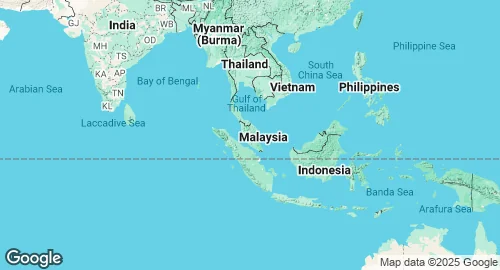Malaysia Military Forces 🇲🇾
Military Strength Overview
| 🛩️ Air Force | 134 active aircraft |
| 🪖 Active Troops | 113,000 personnels |
| ⛑️ Reserve Troops | 51,600 personnels |
| 👮♀️ Paramilitary | 267,200 personnels |
Defense Statistics & Key Metrics
| Population | 35.1 million (2023) |
| GDP | $399.7 billion (2023) |
| GDP per capita | $11379 (2023) |
| Military Budget | $4.3 billion (2024) |
| Share of GDP in Milex | 1.0% (2024) |
| Share of Govt Expenditures | 4.5% (2024) |
| Military spends per capita | $122 (2024) |
| Inflation Rate | 1.83% (2024) |
| Military Personnel | 136,000 (2020) |
Strategic Overview in 2025
Malaysia occupies a location that is both a source of economic opportunity and a significant security challenge. Historically, Malaysia's defense policy has been rooted in principles of self-reliance, regional cooperation through ASEAN, and external assistance, notably via the Five Power Defence Arrangements (FPDA). Its official posture is defensive and non-aligned. However, increasing maritime pressure from China in the South China Sea is the primary driver of its current defense strategy. This has led to a policy of "strategic hedging," where Kuala Lumpur avoids direct confrontation with Beijing, its largest trading partner, while quietly enhancing its military capabilities to deter aggression and protect its sovereignty and significant offshore economic interests.
Military Forces and Capabilities
The Malaysian Armed Forces (MAF) consist of the Army, Royal Malaysian Navy, and Royal Malaysian Air Force, with approximately 113,000 active personnel and 51,000 reservists. The MAF is transitioning from its legacy counter-insurgency focus to developing a more credible conventional warfare capability.
The Malaysian Army is the largest branch, structured into five divisions, and is undergoing modernization with acquisitions of new armored vehicles and modern artillery. The Royal Malaysian Air Force is upgrading its fleet with the procurement of FA-50 light combat aircraft from South Korea and Turkish-made drones for maritime surveillance. The Royal Malaysian Navy is also a priority for modernization, with plans to acquire Turkish Ada-class corvettes to bolster its presence in the South China Sea. Despite these efforts, much of the MAF's equipment remains obsolescent, and modernization programs are often hampered by budget constraints.
Malaysia's defense industry is growing, with a focus on maintenance, repair, and overhaul (MRO) and the local production of less advanced systems. However, the nation remains heavily reliant on foreign suppliers for high-technology platforms and components.
Strategic Trends and Outlook
The most significant trend shaping Malaysia's military strategy is the persistent challenge in the South China Sea. In response, Malaysia is quietly undertaking a military buildup, particularly in East Malaysia (Borneo), which offers strategic depth and proximity to disputed areas. This includes enhancing air and sea surveillance capabilities with new radar systems and expanding naval bases.
The current government has shown an increased commitment to defense, with a modest budget increase aimed at accelerating modernization. However, challenges in recruitment, retention of high-quality personnel, and ensuring consistent funding for long-term capability plans persist.
Malaysian Military Budget History
Population and Military Personnel Trends
GDP and Inflation Rate Trends
Military Expenditure: SIPRI Milex.
